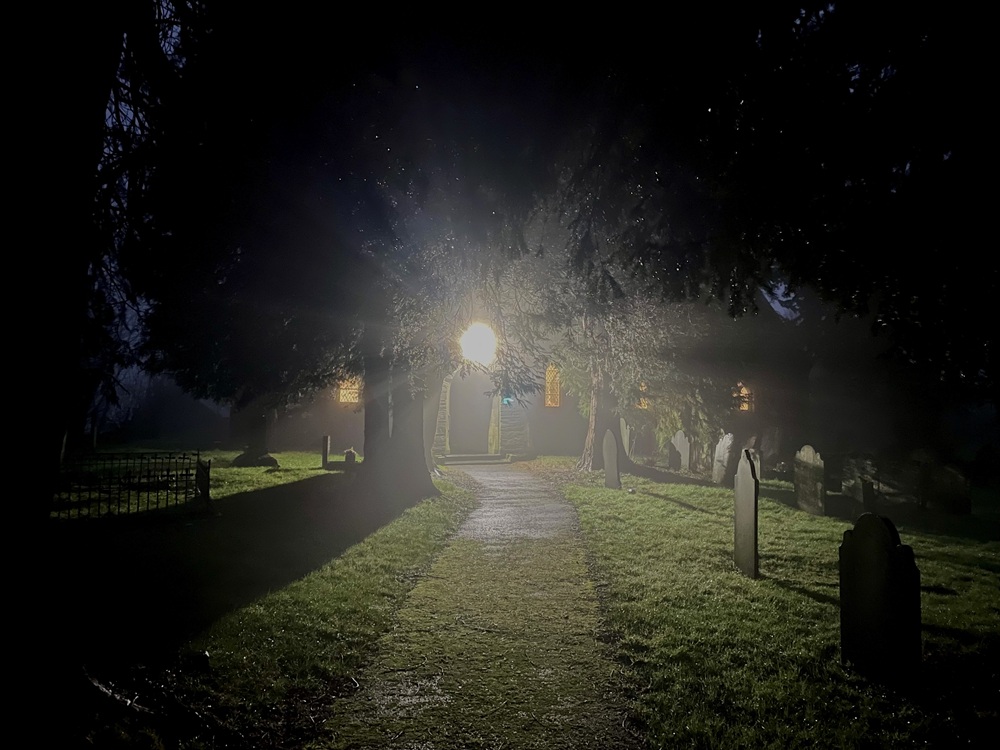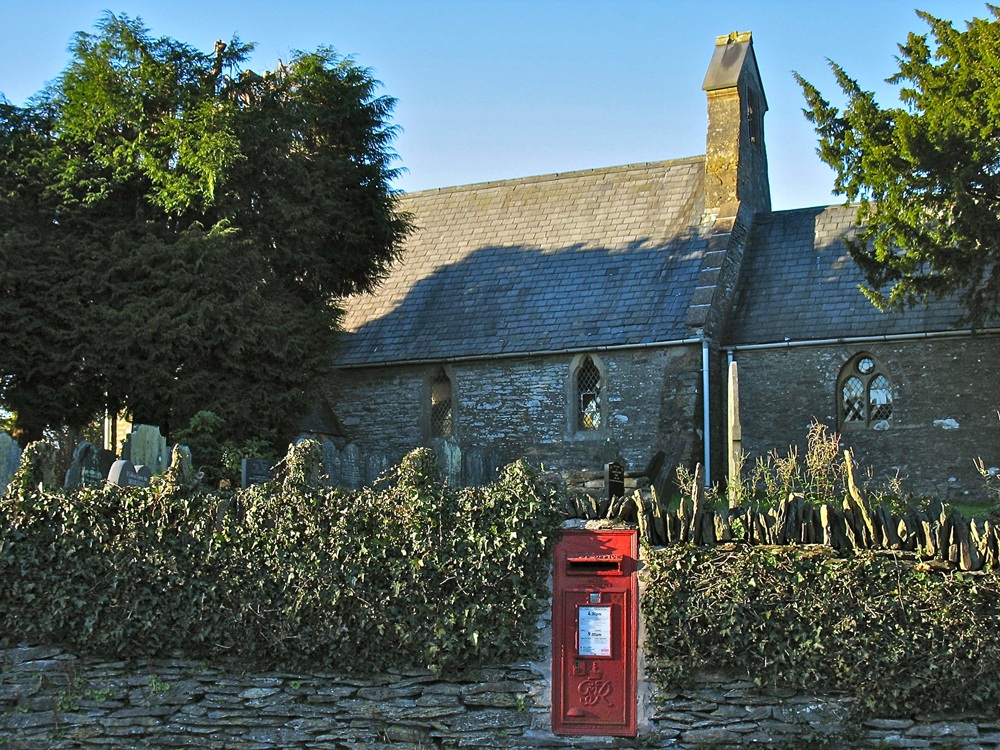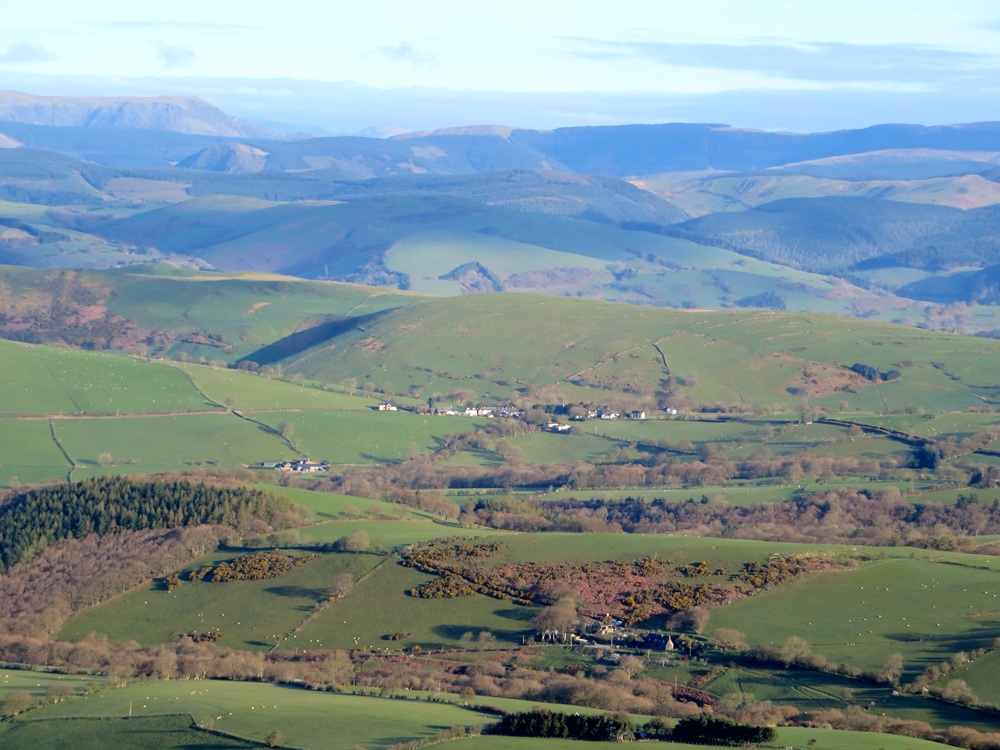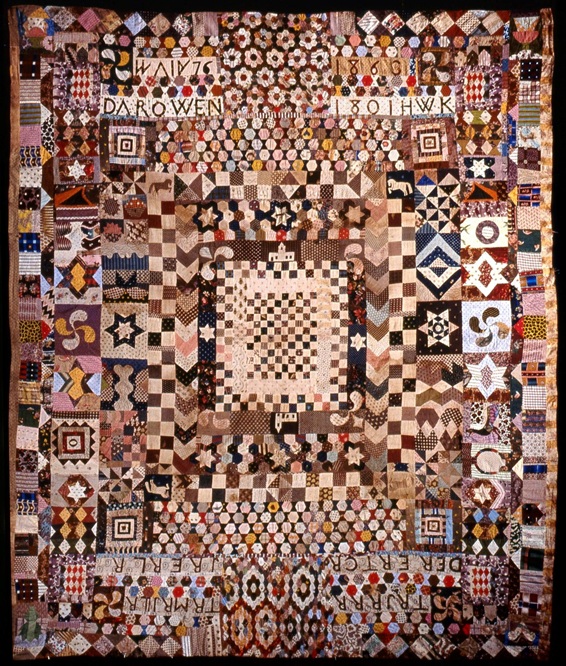Letter from Darowen

Mike Parker
Slightly to my surprise, I’ve become a bit of a churchgoer. I’ve always loved mooching around them out of hours, but shied away from services thanks to an unshakeable lack of belief in the unique divinity of Christ.
More to the point, I cannot get past the hierarchies and horrors that the church has perpetrated in his name over the centuries – and still does.
Then came Darowen.
Ragbag
Fourteen years ago, we moved into this thinly-scattered parish, a ragbag of farms and barns in the west of Montgomeryshire, en route to nowhere.
The eponymous settlement at its heart is tiny. There was a pub, but it closed in the First World War.
The school went in 1971. The Wesleyan chapel became a holiday home.
The only communal space left is the parish church of St Tudyr. If I want to meet my neighbours (and not just the ones I already know), it’s the only real option.

The church itself is a plain Victorian rebuild, but the setting enhances it spectacularly.
Sat in an elevated circular churchyard, crested by ancient yews and lorded over by chattering rooks and jackdaws, it oozes rootedness, a solidity that never fails to stir.
The location adds to it. Darowen is not your typical Welsh village, tucked into a fold of the hills or piped along a valley floor, hidden from view. It straddles a ridge over six hundred feet up, and is visible for miles around. Though tiny, it commands the scene.
On this misty Christmas Eve, just after dark, there were sixty or seventy of us in St Tudyr’s for the festive service, the biggest turnout in years.
Half-a-dozen teenagers shared a sweet few songs that they’d practised, but that aside, it was a normal communion service, though of course tinsel-fringed.
On the hymn board, they ran out of number 4s, because all of the carols in Caneuon Ffydd are in the four hundreds, and we nearly ended up singing something no-one knew instead of O Come All ye Faithful.
Except of course we were singing O Deuwch, Ffyddloniaid, for St Tudyr’s is the last church in Powys to conduct all of its services entirely in Welsh.
One by one over the decades, other churches here in the Dyfi valley have gone bilingual, which often means mostly Saesneg.
In the name of that ever-slippery shibboleth of ‘accessibility’, there has been some pressure from church authorities that Darowen should go the same way, though it’s been resisted, and thank the nefoedd for that.
A service naturally and entirely yn Gymraeg – prayers, readings, songs, responses, laughter, the lot – is a thing of such rare beauty.
With the judicious use of a few dozen candles, it helped transmute a small, prosaic, whitewashed church at the end of a dark and difficult year into a cauldron of such sanctity and strength.
I felt as if I was partaking of something timeless, and would not have missed it for the world.

The neighbour that I went with has very little Welsh, but she loved it all the same. There’s a word-for-word translation into English on the opposite page of the service book, but as she said to me afterwards, it was lovely just to bathe in the intonation and rhythm.
You can intuit intent and feel meaning without having to nail down every word.
After the service, there was much chatter, and speculation as to why the numbers were so high this Christmas.
One factor has been the dogged determination of a few this last year to stage events in the church outside of services.
Lectures, lessons, readings and recitals have acted as fundraisers to develop the building properly as a community space, as well as a place of worship.
There have been some terrific get-togethers, oiled happily by a local cider-maker.
Numbers will be even greater on Thursday, when St Tudyr’s holds its annual plygain celebration.
Montgomeryshire is the undisputed homeland of plygain, and Darowen one of its few churches with an unbroken tradition.
Two hundred years ago, the remarkable Mary Richards trained the village choir to sing through the night into Christmas morning, and in 1903, a school inspector noted of the village that ‘seldom is sweeter, more tuneful and more correct singing heard in a rural school’.

In our first year here, I wanted to go to plygain, and opted to walk the mile and a half from home to church along an wtra, that lovely Maldwyn word for a deep, sunken old track.
It was a cold, clear night with a full moon, but I underestimated how long it would take, and ended up having to jog the last half-mile.
By the time I arrived, heat from both exertion and anxiety were pouring from me. The singing had started, but there was no way I could burst in, sweating and steaming quite so copiously.
Instead, I sat on the stone porch step to cool off in the long moon shadows of the yews, eavesdropping on the service to the accompaniment of owls.
That first year, I never made it inside St Tudyr’s, but I’m so glad to be a semi-regular there now.
Though still resistant to organised religion, I appreciate deeply the chance to find stillness in a place to which people have for centuries brought their heartfelt loves and hopes, their deepest fears and losses alike. Most of all, I am utterly awed by the sense of being in direct communion with a long and living and eternally Welsh community.
The Plygain service at St Tudyr’s church, Darowen, will be held at 7pm on Thursday 9 January
Support our Nation today
For the price of a cup of coffee a month you can help us create an independent, not-for-profit, national news service for the people of Wales, by the people of Wales.





Diolch. Hyfryd.
My maternal grandmother and my paternal great-grandfather were born in Darowen. (They were not related to each other, I’m glad to say!) I spent all my childhood holidays in nearby Commins Coch. ‘Dwi’n falch i ddweud fy mod innau a fy mhlant a’r wyresau/wyr yn rhugl yn yr hen iaith. Dim ond myfi, ysywaeth, sy’n arddel y Bowyseg Ber…
Thank you, this is a really lovely piece. As a priest in Wales it is heartening to see how the church is helping to support community, and there are things we can all take from this.